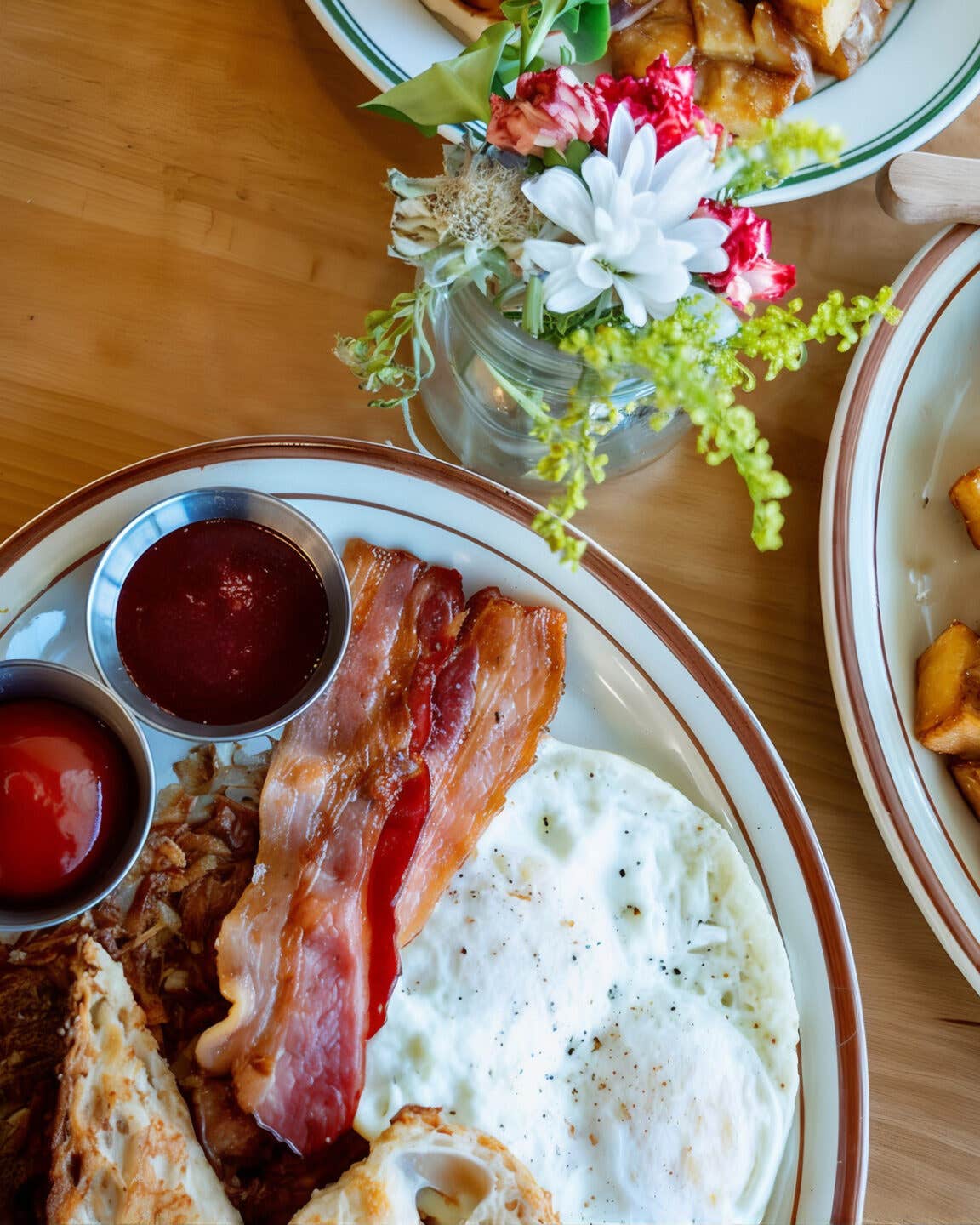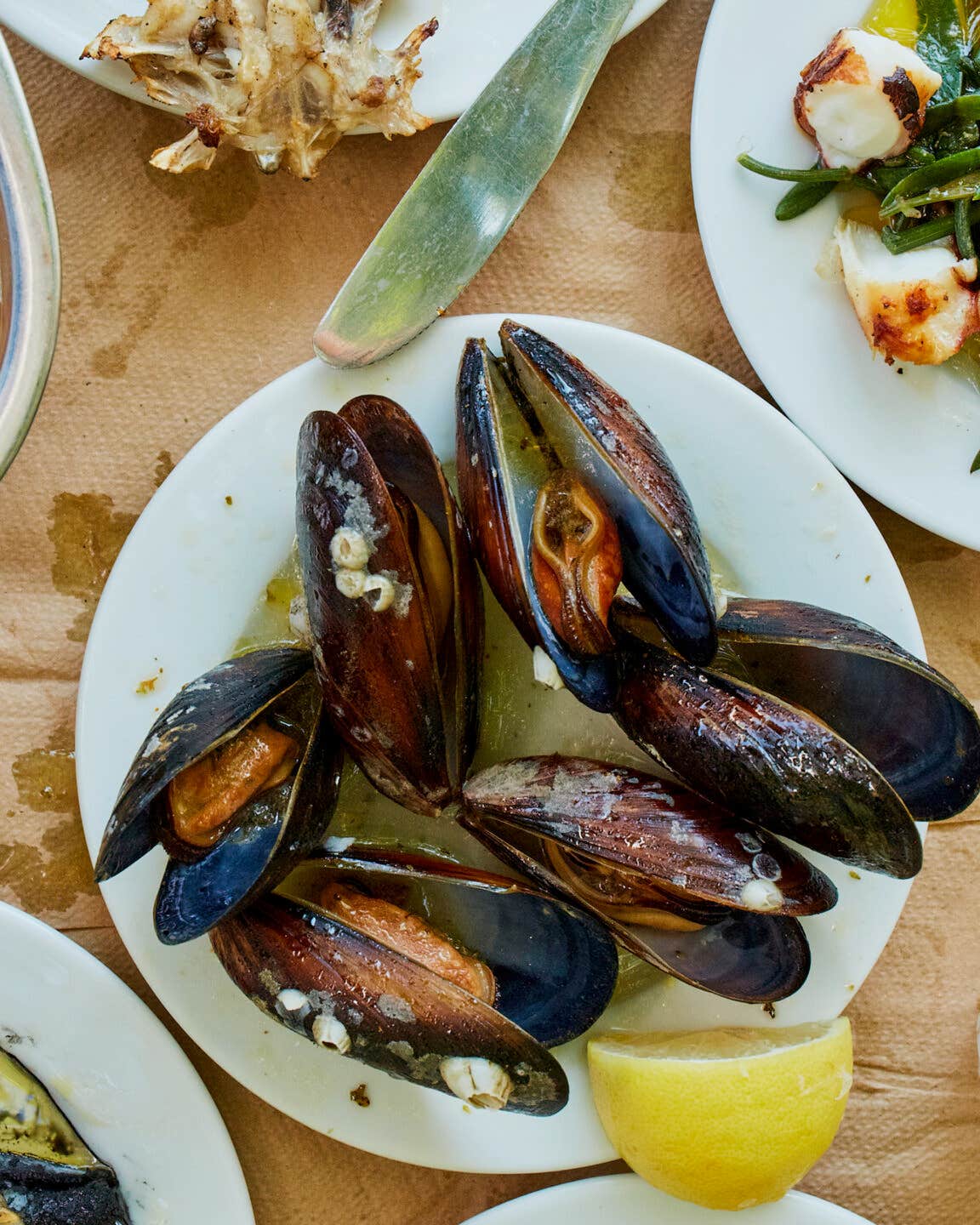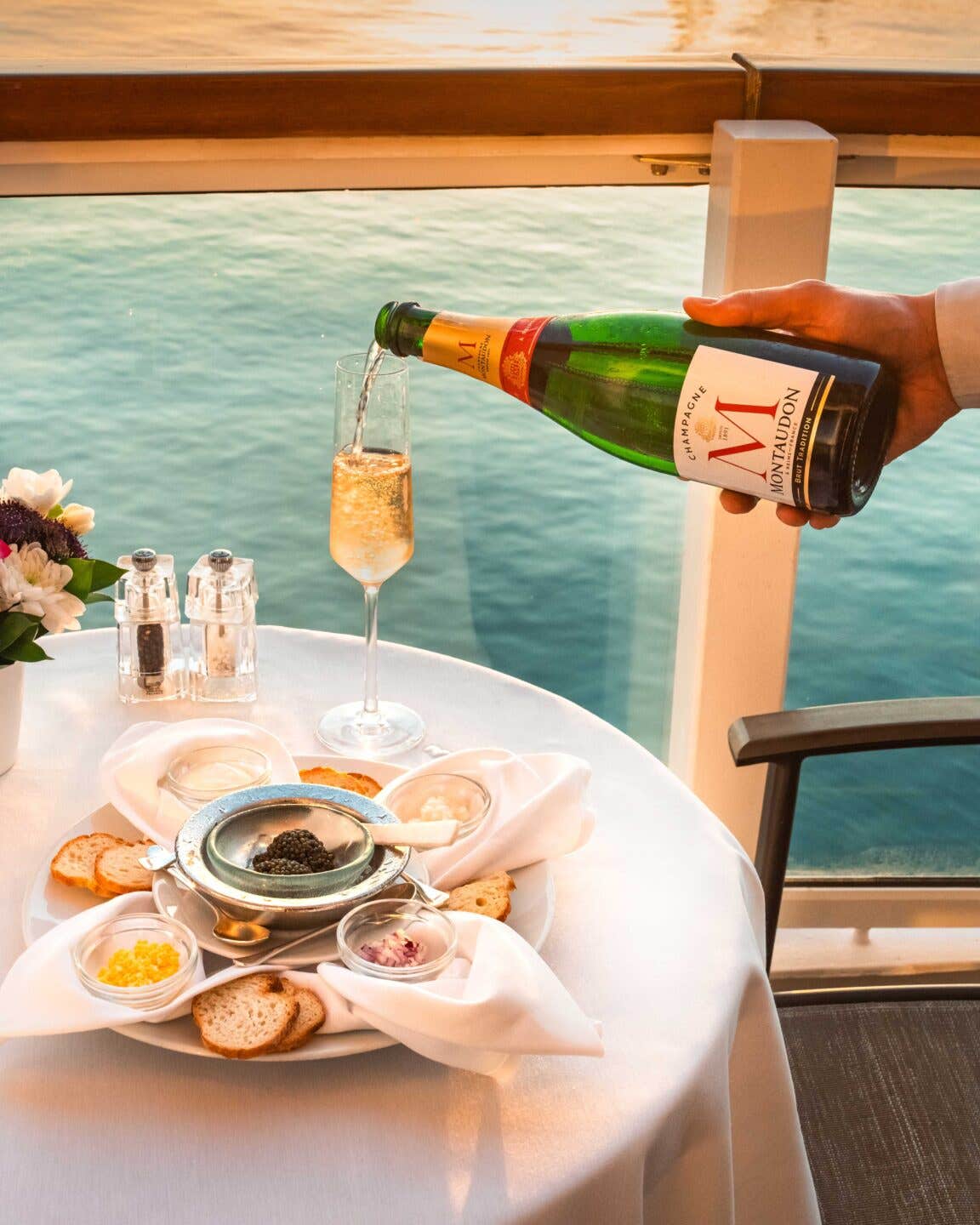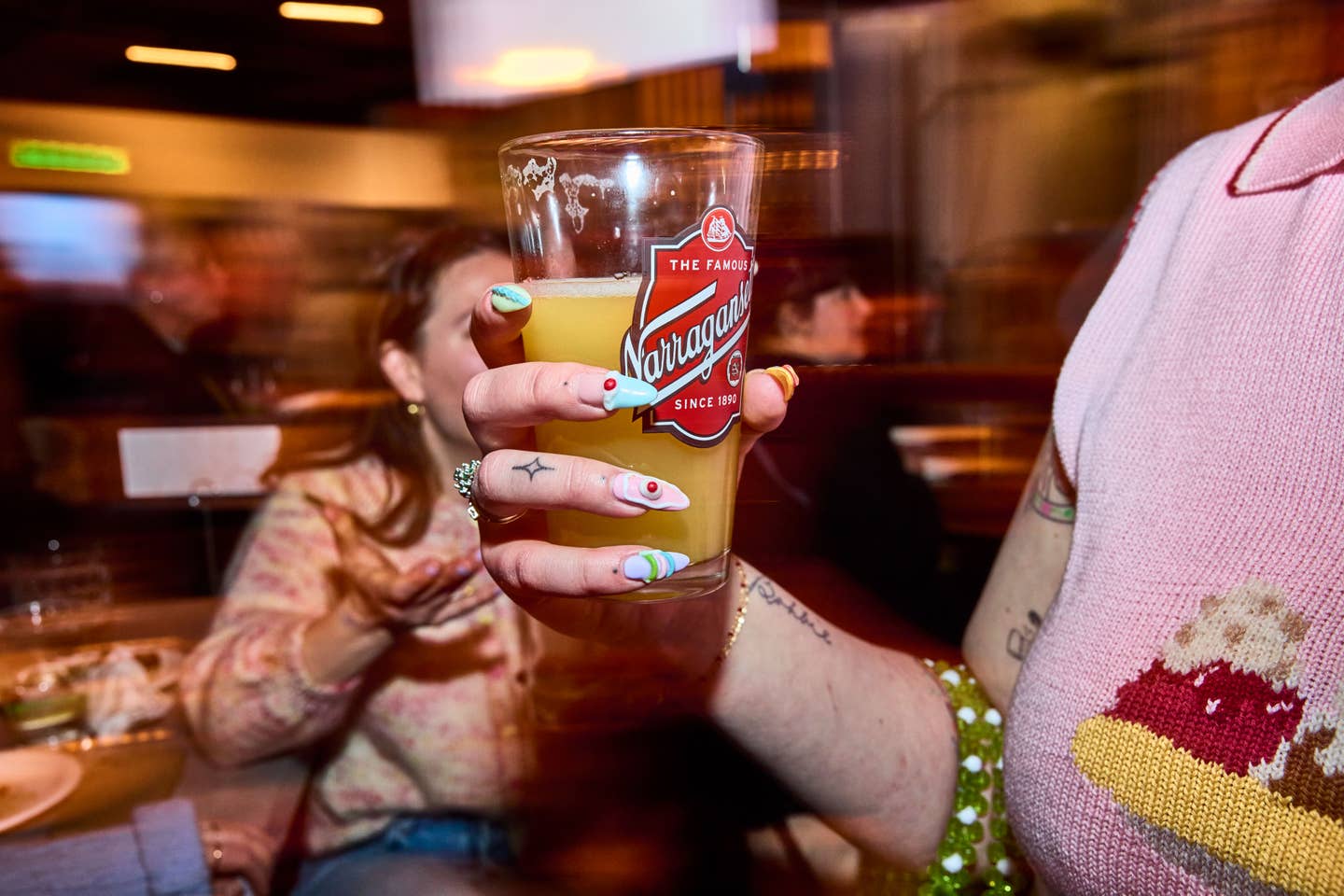
Empress of San Francisco
Cecilia Chiang, the aristocratic emigre from Beijing who revolutionized Chinese cooking in San Francisco 40 years ago, lifts a shrimp dumpling to her lips—here at Yank Sing on the border of Chinatown—and announces, "Chinatown is dead." Chanel-chic and still her feisty best at 80, Chiang is right: Though the streets of the neighborhood still bustle, the shops are more geared to tourists than to cooks these days, and many landmark fish and poultry places have closed. But Chiang still has her favorite spots. I follow her as she walks briskly uphill on her tiny, impossibly high heels to the Ten Ren Tea Company—where the manager hovers over us and brews us tiny pots of tea: rare oolong spring and gunmetal-colored jasmine pearl. At Gin Wall hardware store, its windows chock-full of woks, giant skimmers and chopsticks, Chiang helps me choose a Chinese cleaver, perfect for thwacking through a chicken bone with one chop. She used to buy cooking equipment for her restaurant here, and two of the brothers who own the place greet her with respect. "You got old," she kids them. "I remember when you were just boys…" They politely remind her that she's the same age they are.
When Chiang opened her groundbreaking restaurant, The Mandarin, here in 1961, the city's Chinese restaurants—almost all of them in Chinatown—were serving Americanized Cantonese food, bulked up with hunks of celery, carrots, and bamboo shoots. "They were the cheapest ingredients you could get!" Chiang says. She changed all that, opening outside Chinatown, on Polk Street, and offering the Peking-Shandong and Sichuan-Hunan specialties favored by the mandarins—China's former ruling classes. But Chiang brought more than flavor to the experience; she brought rigor, discipline, and grace, too. "Chinatown in those days," Chiang remembers, wheezing with mirth, "they'd just throw things at you, bam bam bam, drop everything on the table. I knew my food was better and certainly I'd give them much better service."
It worked: With just 65 seats, in what was then a rather unfashionable neighborhood, The Mandarin quickly attracted popular acclaim—and the patronage of such culinary luminaries as James Beard, Chuck Williams (of Williams-Sonoma), and actor Danny Kaye, himself a great Chinese cook. Through this modest eating place (and with other pioneering restaurateurs like Virginia Lee in Manhattan and Joyce Chen in Boston), Chiang accomplished nothing less than introducing regional Chinese cooking to America.
Tomorrow, Chiang decides, she'll show me how she prepares some of the specialties that have made her famous. But today we'll shop for the ingredients in San Francisco's Richmond District—its "New Chinatown". We climb into her black 1997 Mercedes E320, and Chiang pulls an illegal U-turn, taking off like a race-car driver through the streets of San Francisco. On the way to the Richmond, she begins to reveal what it was like to grow up in an aristocratic family in 1920s and '30s Beijing, before the Japanese occupation and the Cultural Revolution swept away that gracious life forever. Home for her was a Ming-era palace with seven flower-filled courtyards, near the Forbidden City. On staff were feng shui consultants, tailors, nannies, and others who tended the great eating hall, the mah-jongg rooms, the children (there were 13 of them), the nine dogs, the seven cats, the assorted birds, and the gardens. The fire-keeper's only job was to stoke the palace's underground furnace.
Chiang, born Sun Yun, was called Cecilia by her Catholic professors at Beijing's University of Fujeng, and she adopted the name officially years later, when she emigrated to America. Her father retired at 45 to devote himself to the joys of leisure, which included tinkering with clocks and hothouse bonsai. Chiang's mother, who was among the last generation of Chinese women to have bound feet, handled the family finances, embroidered her children's silk and cotton shoes, and excelled in the kitchen, directing two chefs who prepared intricate delicacies from Beijing and Shanghai. "My mother," Chiang tells me, "made her own soy sauce, fermenting and cooking soybeans, then setting crocks of the sauce out in the sun in bamboo baskets. At night she covered them with old quilts. In winter, we had wind chicken and wind duck she had air-cured by hanging the birds outside during warmer months. Cabbage greens suspended from strings fluttered and dried in the courtyard breeze. Later she rehydrated them in broth with bits of the wind chicken or wind duck." Chiang was never far from her mother's side, watching, tasting, and talking about food, developing the sensitive palate that would become her key to survival.
When we reach the Richmond, with its broad streets packed with shops, we head to Chiang's favorite store, Richmond New May Wah Supermarket. She marches briskly through the aisles, and as she surveys the lively scene she snaps her fingers and exclaims, "Now this is where the action is, this is where the money is!" She scrutinizes everything: The fish must have clear, bright eyes and deep red gills; the pork, just the right ratio of fat to lean; the asparagus must be thick, green, and crisp. She fills her shopping cart and checks out, and we head back downtown.
The next morning, I cross the Golden Gate Bridge from San Francisco into Belvedere and discover Chiang's sheer, 1960s glass house suspended over the bay. The rooms are filled with orchids and a lifetime's collection of precious objects. She welcomes me with a tiny cup of the fragrant jasmine pearl tea we bought yesterday, poured from an antique Yixing teapot; and a red lacquer bowl of congee, a comforting rice porridge, served with pickles, thousand-year-old eggs, and fermented bean curd. I peek into her glass-enclosed mah-jongg room, where she spends raucous hours gambling and drinking with friends. "You want to learn?" she asks. "I will take away all of your money." And she would, too.
We move into the kitchen, where I observe Chiang's every action: how she slices eggplant at the last minute, so the flesh stays snowy white, and steams it only long enough to soften it, while the skin stays purple; how she arranges scallions in a crisscrossed "rack" on a platter for the steamed rock cod. Everything she does seems utterly effortless, but I know it's the result of skill and years of experience. I offer to help, but Cecilia, after correcting my slicing and even my dishwashing techniques, tactfully suggests that I watch instead.
As she chops and simmers, Chiang continues with the tale of her life. Her luxurious childhood came to an abrupt end when the Japanese marched into Beijing in 1937. Soldiers appropriated a section of Chiang's family palace, as well as the best foodstuffs. The family was reduced to eating the boiled husks of rice and green peas. Chiang was terrified. "So many of my schoolmates just disappeared. Later on, I discovered they had been arrested by the Japanese, and some were killed." In January of 1943, when she was 24, Chiang boarded the train with her sister Sun Chin and left for Chongqing, the seat of free China, 900 miles to the south in Sichuan. Disguised as peasants, the two traveled a third of the way, to Shangqiu. There, they were startled to discover, the train line ended. To make matters worse, Japanese soldiers confiscated their luggage. They struggled on by foot, taking cover as Japanese fighter planes flew overhead and comforting themselves with memories of home—dreaming about persimmons embedded in snow, roasted chestnuts, velvet chicken, spiderweb prawns.
As Chiang lifts dried black Chinese mushrooms from the water they've been softening in and snips off the stems ("Sometimes they are bitter," she explains), she tells me about the day she and her sister, caked with filth and exhausted after walking nearly a hundred miles, came to a tiny town called Jieshou. "When we saw a portrait of Chiang Kai-shek, we knew we were in free China. I cried and cried." Luckily, the general in command was married to one of Chiang's former classmates, who fed, dressed, and sheltered the sisters, and gave them money for the rest of their journey. Traveling with army escorts this time, by car and by train, the girls reached Chongqing at last. There they found an uncle, a famous general in the Chinese air force, who took them in and fed them well. "I spent time in the kitchen there because it was always warm and it smelled so good," says Chiang. She loved the fiery foods of Sichuan—baby corn with chiles and black beans and eggplant with spicy sauce, both of which she would later serve at The Mandarin.
When our lunch is ready, we sit down at Chiang's dining table overlooking the fog-shrouded bay, nibbling on chewy, succulent red-cooked pork, so good with her pungent garlic noodles. She's made bok choy, too, with meaty black mushrooms; a delicate asparagus stir-fry; and her famous minced chicken, served in lettuce cups. Her food is clear-tasting and simple, with a perfect balance of high, bright notes underscored with rich, sweet, deep flavors.
"Life improved in Sichuan," Chiang continues. She began teaching Mandarin at the American and Russian Embassies and married a former professor, Liang Chiang, from Beijing. With marriage came some of the comforts of her old home: servants and a cook. In 1945 they moved to Shanghai, a sophisticated, modern city with fabulous food and a lively night life, and she bore a son and a daughter. But with the onset of Communism, the political climate again turned treacherous. In 1949 Liang Chiang took a job at the Chinese Mission in Tokyo, and they left on the last plane from Shanghai. Because they were allowed only one child, they left Philip, their two-month-old son, with Sun Chin; it was two years before they saw him again. In Japan, Chiang, who hadn't quite learned how to cook yet herself, decided—along with some relatives who'd also escaped to Tokyo—to open a Chinese restaurant that would feed them all. The 250-seat establishment, which served traditional banquet food, was an instant success, though most of the customers were Chinese and American; the Japanese were too poor to come. As she had throughout her life, Chiang paid attention in the kitchen: "My chef was from Hong Kong, and I watched him closely, learning how to cut fish and meat."
It wasn't until she moved to the United States that Chiang actually started to cook. Another of her sisters, Sun Sun (now called Sophie), who lived in San Francisco, had recently been widowed and needed her emotional support, so in 1961, Cecilia made the journey there from Tokyo, planning a brief visit. While she was there, she helped friends negotiate a restaurant deal—and found herself stuck with the $26,000 lease. She responded by launching The Mandarin, hiring a husband-and-wife cooking team, and doing everything else—including cleaning fish and washing vegetables—herself. She also developed recipes for the place, based on childhood taste memories.
The mostly male Chinatown restaurant establishment was skeptical. "People predicted that I would close in less than a hundred days," Chiang says, "because I didn't speak Cantonese, my English was not that great, and I was a woman. But I told them: 'You guys just watch me. I'm going to do it. And I'm going to do it very well.' " With polished service and the foods of her rich and turbulent past, Chiang became a star in local culinary circles. Her children joined after a four-year wait for visas. (Her husband decided to remain in Tokyo, but visited San Francisco twice a year until his death ten years ago.)
By 1968 The Mandarin could no longer handle its swell of customers, and Chiang relocated to Ghirardelli Square, near Fisherman's Wharf, creating a space as serene as a temple. Well-heeled San Franciscans flocked to The Mandarin for sizzling rice soup, "Peking" duck, and steamed fish. Chiang was one of the first Chinese restaurateurs to offer fine wines, and she gave wildly popular cooking classes. In 1975 she opened a second Mandarin, in Beverly Hills. "Cecilia became an institution," says Chinese food expert Barbara Tropp. "You felt, as you entered her restaurants, that you were in the weave of Chinese culture."
Chiang sold the San Francisco Mandarin in 1991, after her business partner died—but her life remains full. She is still out almost every night for dinner, travels the world, and sees hundreds of friends every year. And even though she consults for restaurants—Shanghai 1930 and Betelnut are recent clients, and both serve some of her old dishes—San Francisco misses her shining light.
I still picture Cecilia at her 80th birthday party, a small, simple affair for 360 of her best friends, held at Shanghai 1930. It was a joyful night, filled with toasts, stories, and, of course, food—smoked tea duck, sesame shrimp, anchovies with peanuts and chiles, and Chiang's famous spareribs. The guest of honor looked radiantly satisfied with life. She passed out little red and gold envelopes filled with lucky money to all of her young relatives. The envelopes, she tells us, are like ones she'd received as a child: "My mother would wrap up the money, and my father would write lucky phrases to go with it, wishing you a long life or good health," she says. "Then he'd tuck the envelopes under our pillows, with a piece of pine on top—evergreen, so that we would stay ever young." That little wish from her father seems to have worked: Around midnight Chiang was still on the dance floor kicking up her heels, while the rest of us were thinking of heading home to bed.
Keep Reading
Continue to Next Story










